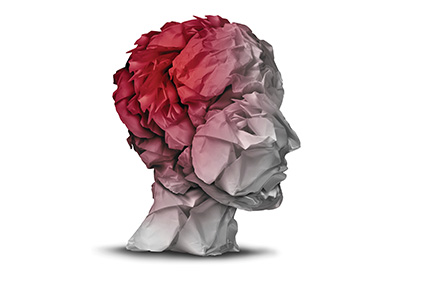A concussion is caused by a bump, blow, or jolt to the head or body that causes the head and brain to move quickly back and forth. Even a “ding,” “getting your bell rung,” or what seems to be a mild bump or blow to the head can be serious.
The above is the opening information on the “Parent & Athlete Concussion Information Sheet” required by Michigan law (effective June 30, 2013) to be read and signed by each parent/guardian and youth who participates in an organized athletic activity.* The law also requires “all coaches, employees, volunteers, and other adults involved with a youth athletic activity” to complete a concussion awareness online training program. Approximately 40 other states have enacted similar legislation.
Impact of TBIs
Legislating broad awareness of traumatic brain injuries (TBI) is one means to address this serious public health threat. According to the CDC:
• At least four TBIs occur every minute;
• 5.3 million people live with TBI-related disability;
• TBIs cost Americans $76.5 billion in medical care, rehabilitation, and loss of work every year;
• In 2010, there were approximately 2.5 million TBI-related emergency department visits, hospitalizations, or deaths;
• Falls are the leading cause (40%) of TBI, followed by unintentional blunt trauma, e.g. hit by object (15%) and motor vehicle crashes (14%).
Everyone should be aware that TBIs are now a high-profile threat whose harmful effects must be prevented or limited. The brain is our body’s CPU and deserves ultimate care and protection.
System failure
In spite of the growing awareness of TBI, system failure continues. On September 27, 2014, the University of Michigan was hosting Minnesota in a football game. Michigan quarterback Shane Morris was leveled to the turf by a helmet-to-helmet hit. Shane laid motionless face down for a few seconds, struggled to rise, and then nearly collapsed into the arms of one of his linemen.
I and about 100,000 other fans at the game knew what should happen next: Shane should be immediately pulled from action for a concussion assessment. Loud howls from fans were heard when Shane remained in the game for another play. Louder shouts of disapproval, including some few choice words from me, were heard from fans when Shane was reinserted into the game a few plays later, well before any concussion protocol test could have been administered.
Three days later, after the event was aired and discussed with disapproval in national TV and media outlets, and Shane had a confirmed concussion diagnosis, UM President Mark Schlissel issued a statement that “our system failed” on the health and safety of student-athletes.
What failed? Most particularly, not one Michigan football representative admitted they saw Shane being concussed during the game. That’s incredulous. UM is an academic leader in TBI research and prevention. The colossal failure to rightly address Shane Morris’ concussion is a major reason UM’s athletic director is no longer employed at UM.
UM football coach Brady Hoke has a salary more than $4 million a year. Other football staff is well paid. To keep their high-paying jobs depends upon winning games. Keeping Morris in the game against Minnesota was the best way to win. No one overruled Hoke and his higher ups to pull Shane from the game for health and safety reasons. Everyone played dumb.
Failure at your worksite?
There are many lessons to be learned here. First, times have changed. Some old health and safety hazards, such as concussions, now have a high profile — credit advancements in medical science for the growing awareness. High profile hazards lead to new or additional legislation for greater prevention and control.
Second, a thin line exists between public health and safety (e.g. youth sports) and workplace health and safety. If the public perceives, rightfully so, that TBI is a serious issue that warrants strong control, the perception enters the workplace.
Third, money motivates. Major college football programs are a business much like any other business. Speaking up for safety, particularly taking unilateral action (“Shane, get out of the game!”), could get you fired if not carefully played. If ethics matter, playing dumb in matters of health and safety is not ethical.
Forth, CEOs have the final say in all matters of business. CEOs may overrule highly-paid lower executives’ decisions. CEOs decisions are often greatly influenced by protecting image and brand. Safety is an image. Mark Schlissel, UM’s CEO, toed-the-line in his statement about the Shane Morris concussion, “The health and safety of our entire student community, including all of our student-athletes, is my most important responsibility as university president.” “Most important” trumps all other concerns. CEOs will demand change to fix problems. Heads will roll if change doesn’t occur with speed. UM has already instituted new concussion management protocols.
Concussion to loss of consciousness
Concussions have a range of effects that are individualized. Various methods — concussion assessment tools — are available (easy to find online) to determine if someone is concussed. The NFL Sideline Concussion Assessment Tool is an example. The tool asks someone:
• What is the month, date, day of week, year, and time right now;
• Demonstrate ability to recall a list of words;
• Repeat string of numbers backwards; and,
• Balance tests.
It takes several minutes to complete the concussion tests. Shane Morris never had time to complete the tests before he was put back into the game.
Workplaces should apply an assessment test to determine an employee’s potential level of concussion. A low score may determine who should be seen promptly by a medical professional.
OSHA and concussions
Loss of consciousness occurs at the end range of concussions. OSHA 1904.7(b)(6) requires that any “loss of consciousness,” for any length of time, be recorded on the OSHA 300 Log. OSHA does not define “loss of consciousness.” If someone fails to respond to commands, not just feeling woozy or being disoriented, they may be unconscious. Someone does not have to be totally “knocked-out” to have loss of consciousness. Various health hazards — heat stroke, low oxygen, etc. — may cause someone to lose consciousness.
Medical science continues to explore how the brain functions and reacts to TBI. TBI may cause many adverse health effects including altering mood, memory loss, sensitivity to light and noise, and sleep disturbances. Safety pros should step up their actions to understand prevention and control for TBI.
*The entire form is found at http://michigan.gov/documents/mdch/Parentandathleteinfosheet_415328_7.pdf.




